Research: Fighting over food
28th February 2023
Background
Recent research has investigated interactions between hedgehogs and other species at feeding stations. Hedgehogs are increasingly making use of urban gardens, and the associated supplementary food provided by homeowners. While this food can offer a lifeline for urban hogs, it can also serve to artificially bring together members of a usually solitary species. In addition, provision of food can attract other species that may predate or cause injury to hedgehogs, such as badgers and foxes.
The research, by Professor Dawn Scott and colleagues at Nottingham Trent University, set out to study interactions at feeding stations.
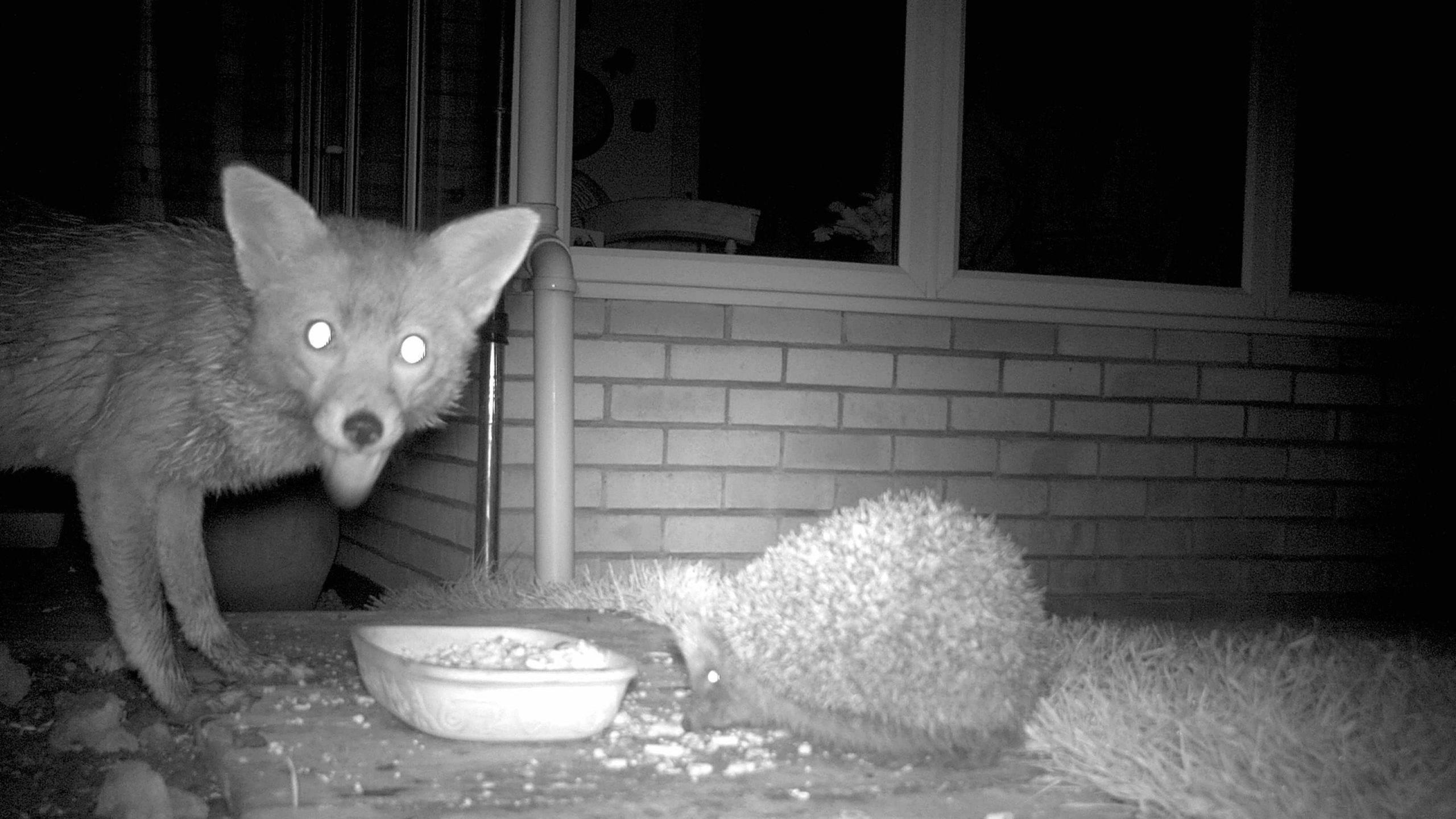
Methodology
The research assessed interactions between pairs of species and members of the same species using citizen science video footage. The species studied were hedgehogs, foxes, badgers and cats. Interactions were classed as ‘neutral’ or ‘agonistic’ (aggression and/or submission between animals).
Findings
Interactions between species
As expected, interactions between species were combative on more occasions than those within the same species.
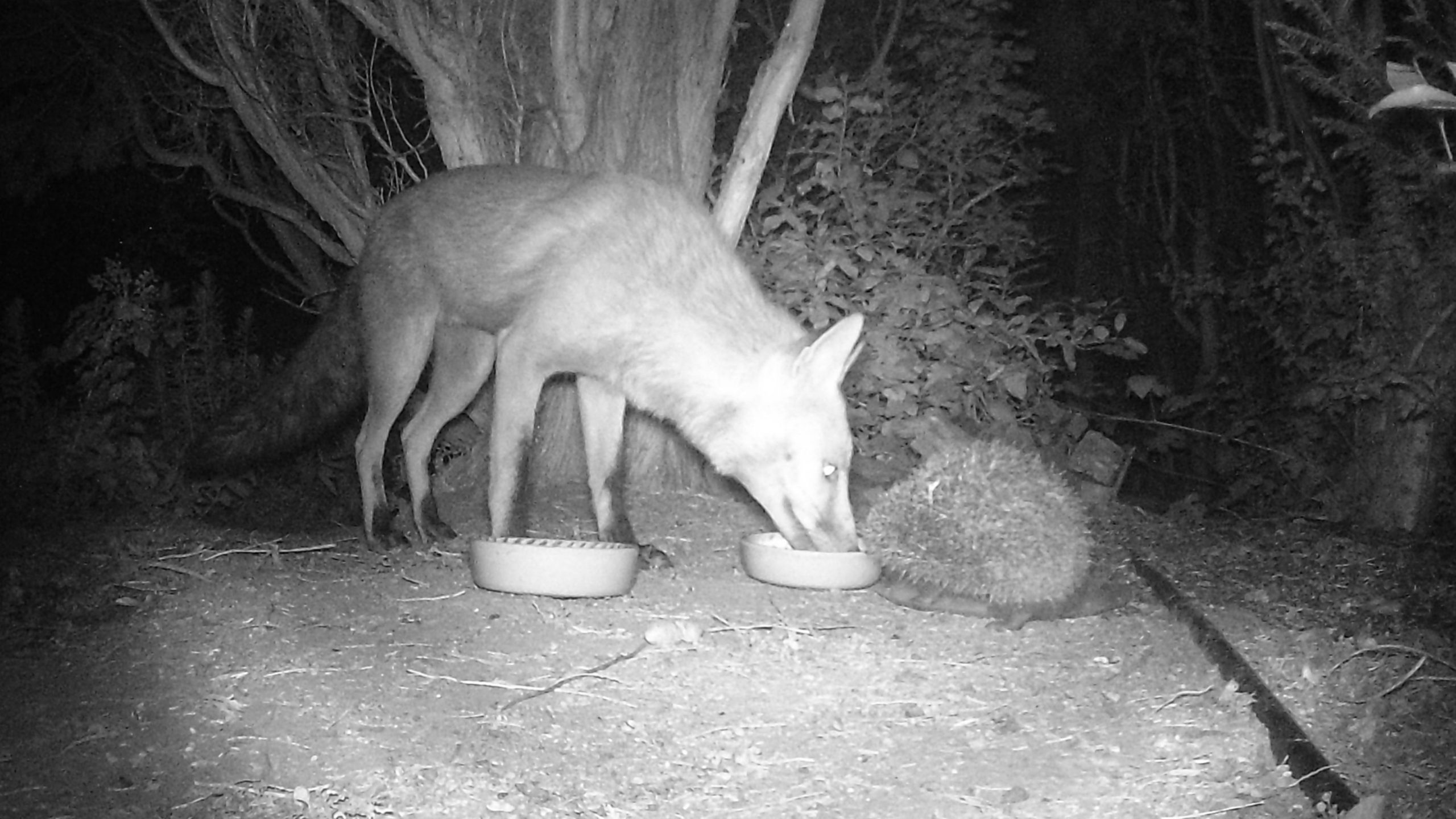
143 interactions were studied between hedgehogs and foxes, with 49% categorised as agonistic, and 51% neutral. Within these agonistic interactions, the majority were competitive (only 5% were potentially predatory), with the fox ‘winning’ 46.2% of the time, and the hedgehog in just 9.6% of interactions.
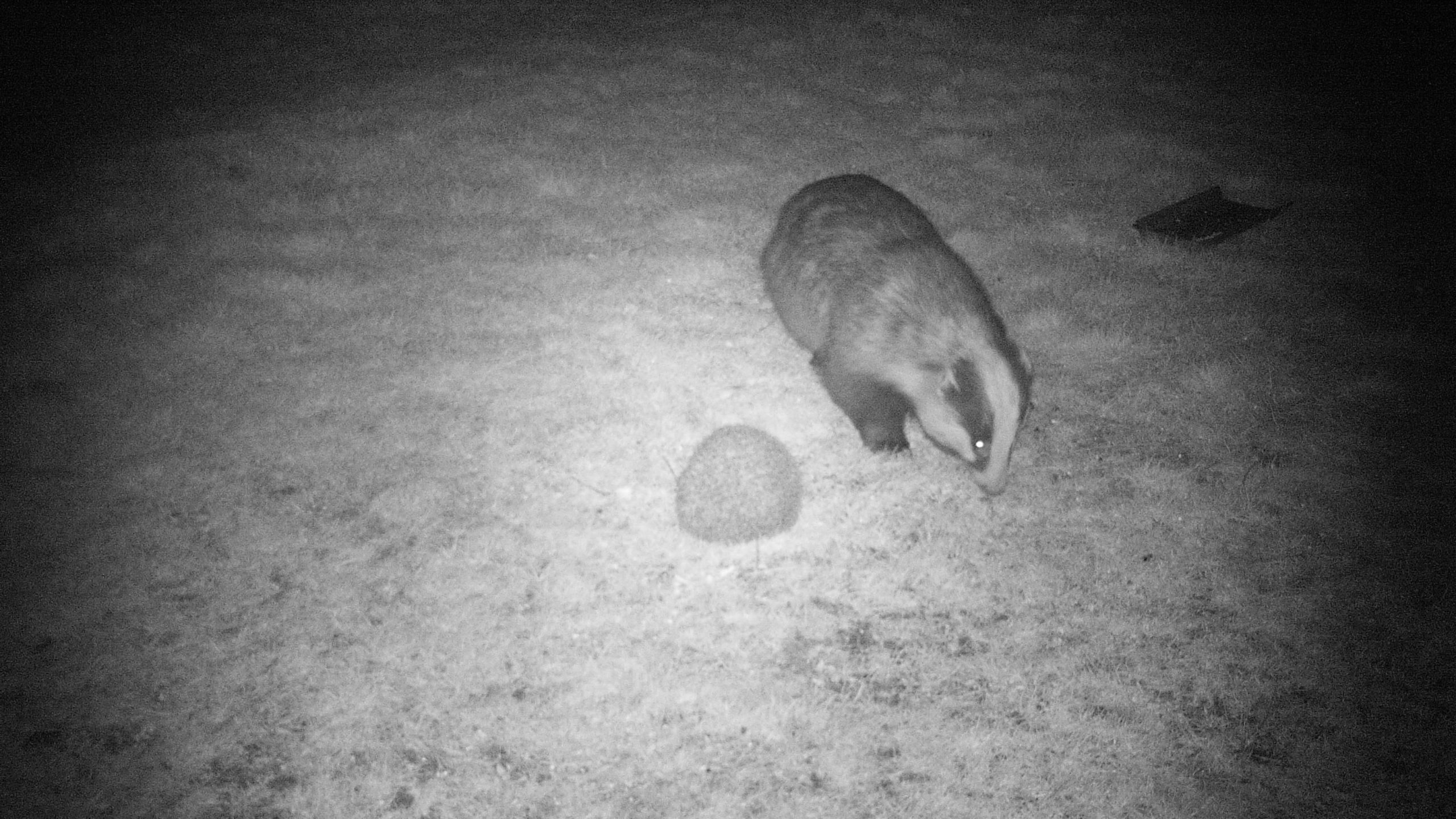
Fewer interactions between hedgehogs and badgers were studied, with 16 interactions showing 31.3% agonistic and 68.7% neutral behaviour. Although badgers do prey on hedgehogs, these agonistic interactions were predominantly competitive in nature (two thirds), as opposed to predatory (one third). Badgers were more likely to ‘win’ food in competitive interactions.
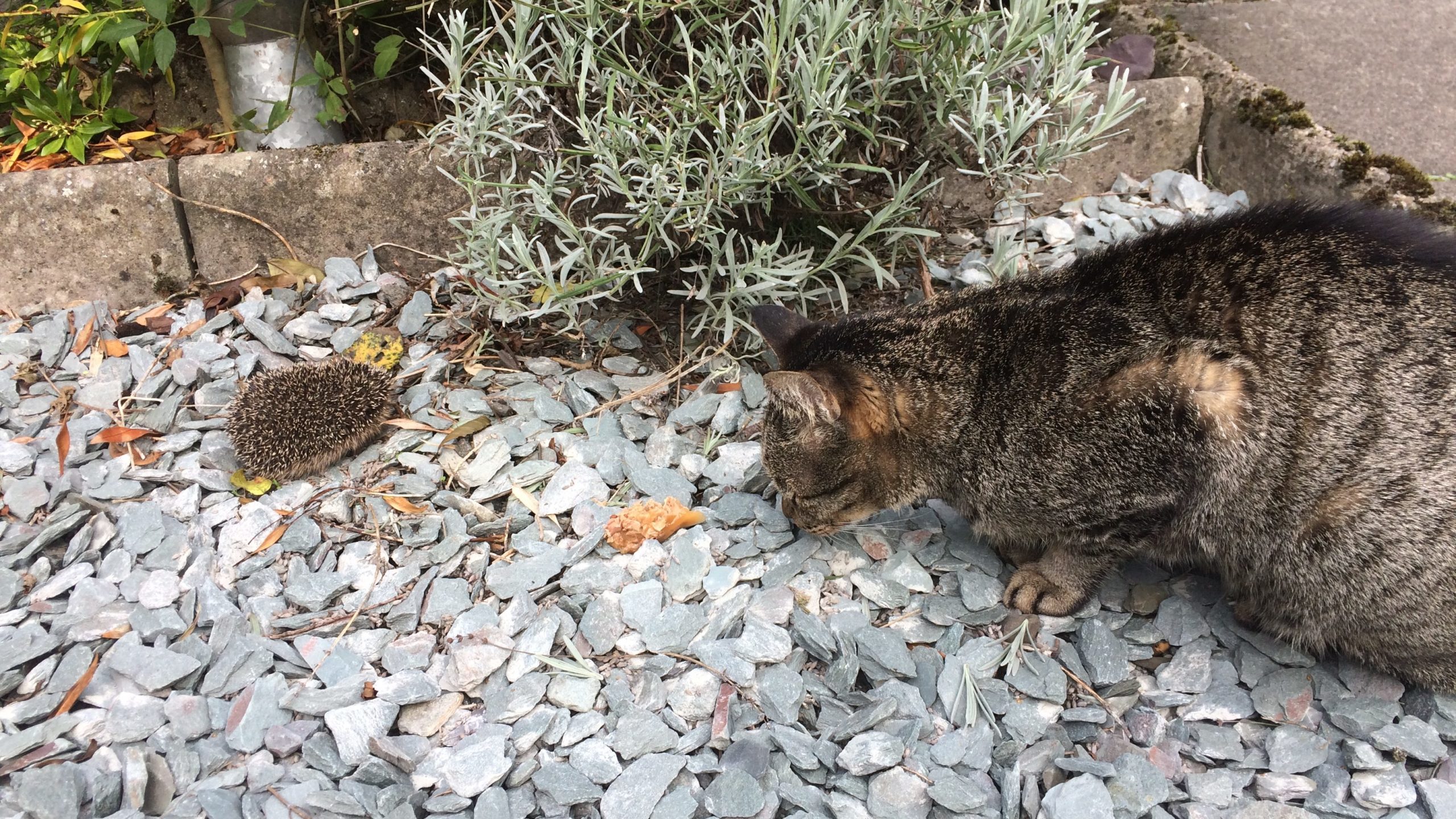
Hedgehogs and cats were studied in 28 interactions; 57.1% agonistic and 42.9% neutral, with a hedgehog more likely to ‘win’ in a confrontation.
Interactions within the same species
Exchanges between members of the same species species resulted in agonistic behaviour 55.4% of the time. Interactions between hedgehogs were shown to be the most fraught, with confrontation in 54.9% of interactions. Hedgehogs tended to ‘barge and roll’ others out of the way, and exchanges didn’t tend to result in injury. Interactions between badgers were the most peaceful, with just 6.7% of interactions being agonistic, and foxes lying in the middle (36.4% agonistic).
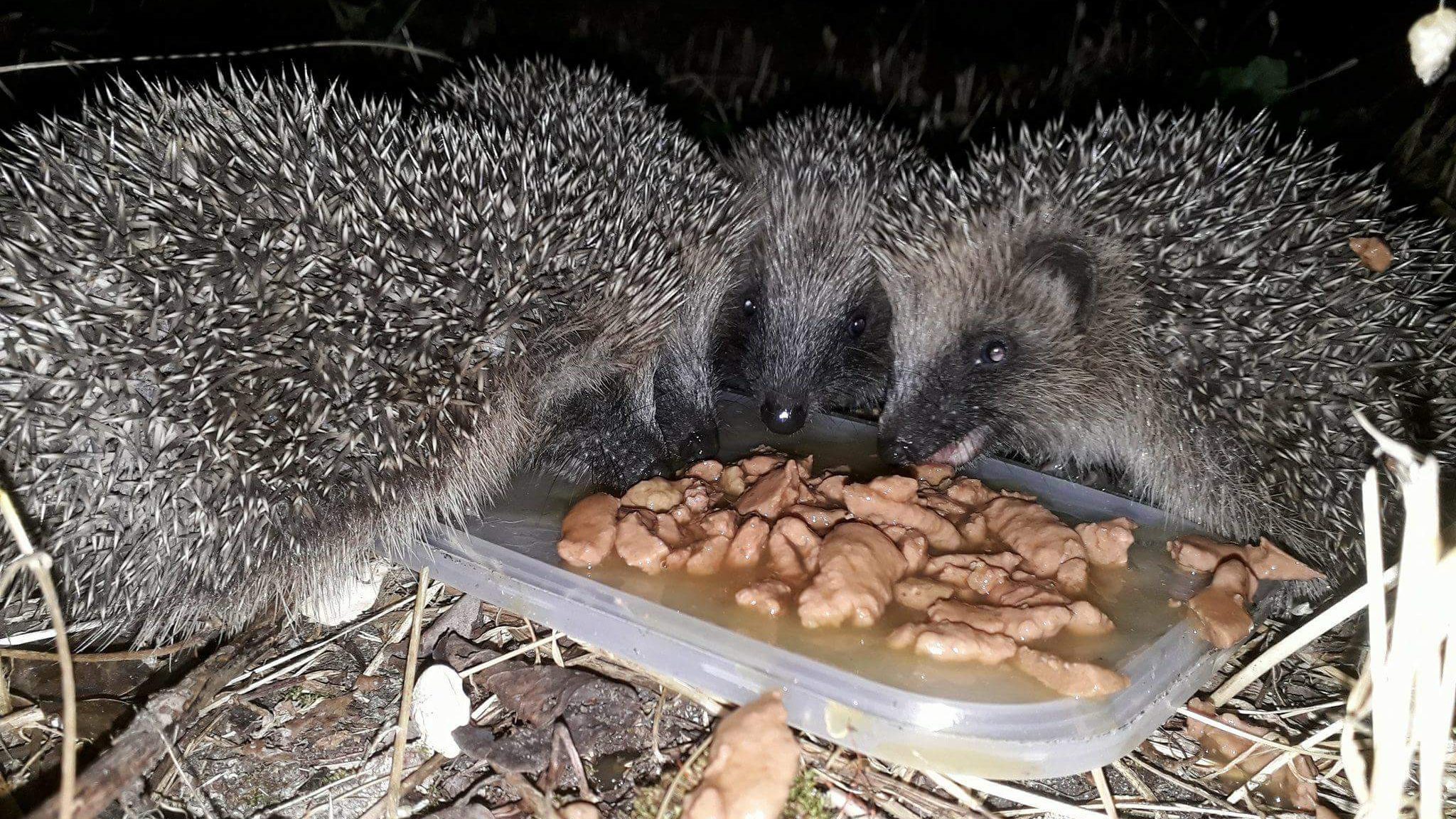
What next?
Previous research has shown that as a solitary, non-territorial species, hedgehogs typically avoid each other. With the exception of courtship, where females exhibit aggression towards males, overt aggression is rare. This study showed that an artificial food source can cause high rates of aggression between hedgehogs. Some ways to reduce this negative side effect while still providing food for hedgehogs include:
- Moving food around the garden at different intervals.
- Leaving food out at varying times.
- Placing food in more than one area to minimise the risk of individuals congregating.
Though not well studied, these measures could also serve to reduce the risk of disease transmission within hedgehogs and between other species.
Find out more about supplementary feeding here.

